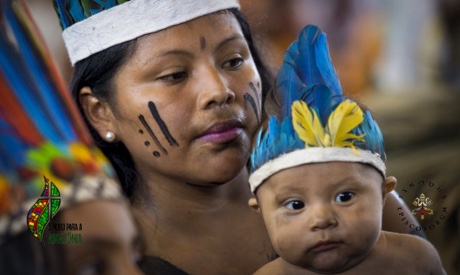Deep in the Amazon forest, young couples looking to wed or baptize children often turn to Sister Alba, who fills in where Catholic priests cannot be found.
But in many remote areas, there are not even enough nuns to go around, and it is laywomen who play a key role in the evangelization of indigenous people.
Many Amazonian bishops present at a three-week assembly at the Vatican want the Roman Catholic Church to create official roles for them.
It is not a question of ordaining female priests. The very suggestion that the male-centric, centuries-old church could do that has thrown traditionalists into a tizzy, and it’s not a change Pope Francis is currently willing to contemplate.
There is interest, however, in giving laywomen official “ministries”, whether that be performing marriages or preaching.
“Two-thirds of the indigenous communities without priests are guided by women,” says Bishop Erwin Krautler, an Austrian missionary who has lived in Brazil for three decades.
While personally he sees “no reason why women cannot be ordained priests”, he thinks the debate should be focused now on female deacons — a potentially invaluable resource in far-flung corners of the world.
Male deacons, who can be single or married, are able to baptize, witness marriages, perform funerals and preach homilies.
They cannot say Mass, give the Eucharist, or absolve people after confession, which only priests can do.
Pope Francis in 2016 set up a study group to examine the role of such deacons at the beginning of Christianity, but in May he said the panel was extremely divided on the issue and still had a lot of ground to cover.
In the meantime, a week ahead of the bishops’ assembly on the Amazon, Francis suggested that laymen and women could be given a formal Bible reading “ministry”.
“The presence of women in the Amazonian forest is extremely important,” says Sister Alba Teresa Cediel Castillo.
She is one of 35 female so-called “auditors” invited to the assembly so the bishops can hear their testimony firsthand.
“There are very few priests. The geographical distances are immense, many priests are constantly on the move,” she said.
According to the Vatican’s Osservatore Romano newspaper, there are areas with just one priest per 25,000 square kilometers, and others where just 45 priests have to serve 1,100 villages. Continue reading
- Image: Zenit
News category: Analysis and Comment.




